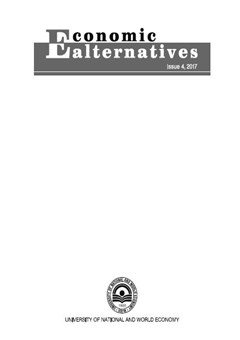Analysis of the Weighted Average Cost of Working Capital of Selected Companies on the Bulgarian Stock Exchange During the Financial and Economic Crisis
Author: Evgeni Raykov
Abstract
The financial and economic crisis which started in 2007 made modern financial management turn to a vast and detailed approach to operational guidance of the business. Attention focused on working capital management and optimization of investment in current assets in the long term. Liquidity impediments and environmental shocks on sales and capital accessibility caused the need for putting more stress on working capital structure and the cost of financing along with profitability of short-term company investments.
The conception of weighted average cost of working capital (WACWC) is based on a long-term approach to short-term assets. The importance of this relatively new indicator reveals the efficiency of liabilities management in crisis and provides a good basis for decisions concerning operating profitability and turnover. The WACWC can also represent the compensation effects of the capital structure dynamics and interest rates influence in times of shortage of capital sources. This new index measures the internal ability of implicit financing sources and the risk of financing current business activities. It also covers some non-traditional capital options that ensued from the crisis like related parties’ financing and sales or depreciation funding, extended trade credit schemes, renewable overdrafts and credit lines, etc. Analyzing data for selected Bulgarian companies during the crisis and post-crisis period (2007-2015) shows a constantly decreasing average cost of working capital financing. This resulted from a changing capital structure that is characterized by an increasing share of equity in the form of retained earnings and debts to related parties. The short-term effect of all other sources of financing continues till the WACWC is in balance with the regulated trading rate of return after normalization of the conditions for overdraft and owner’s capital financing. WACWC shows very close values to classic long-term WACC which is compensated by poor results for the profitability on current assets (ROCA). The higher liquidity requirements led to a reasonable increase in current assets investments although their share to the net revenues remains relatively constant. The enhanced role of owner’s capital has become a natural reaction to the external shocks caused by the crisis but also a remedy assuring flexibility, independent asset management and risk selection for implementing effective hedging policy in the corporation.

